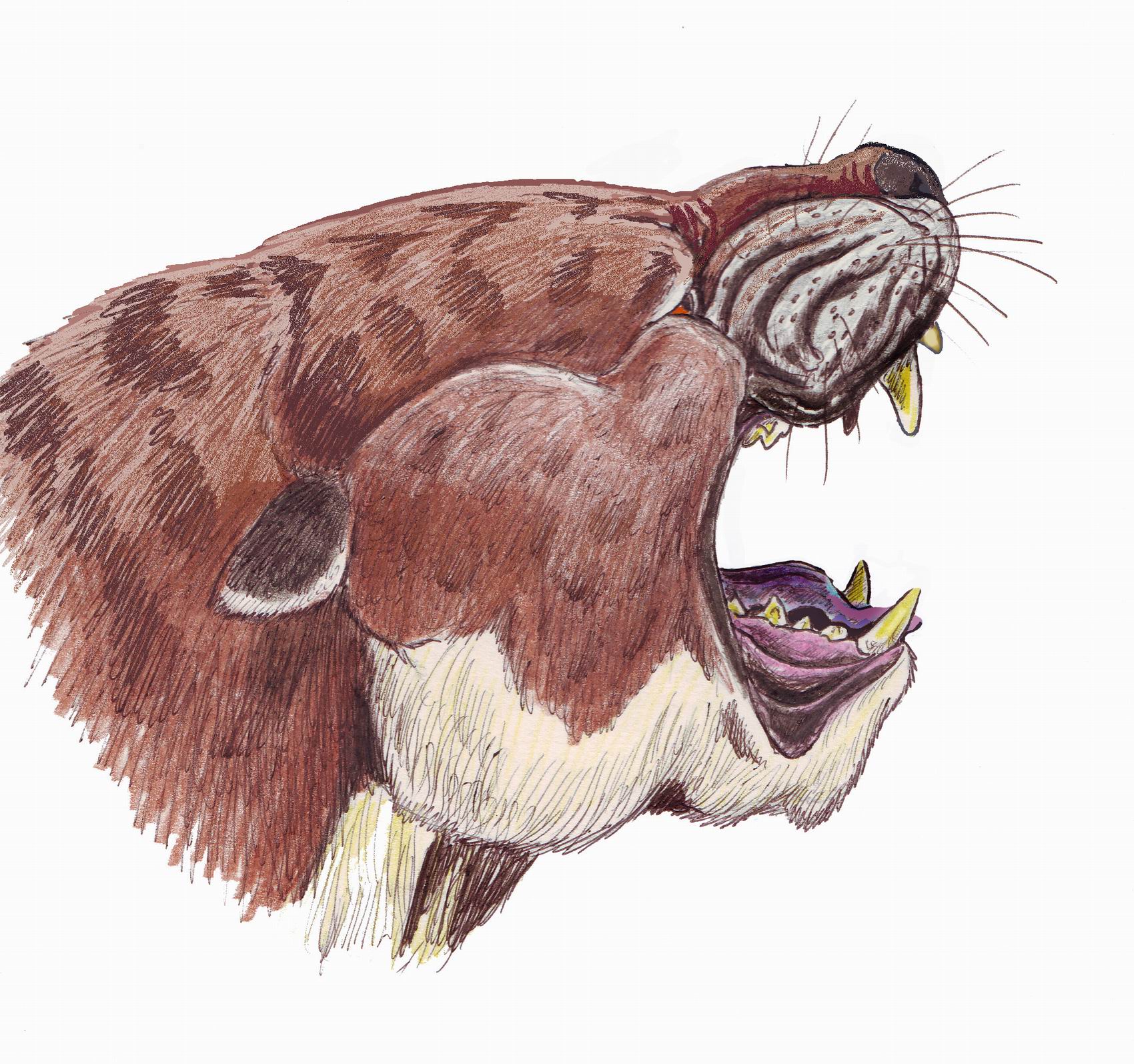- Sarkastodon
Taxobox
name = "Sarkastodon"

fossil_range = LateEocene
regnum =Animal ia
phylum =Chordata
classis =Mammal ia
ordo =Creodonta
familia =Oxyaenidae
genus = "Sarkastodon"
species = "S. mongoliensis""Sarkastodon" was a giant meat-eating
mammal that lived in theEocene , about 35 million years ago. It was a member of the extinct order ofcreodont s (Latin and Greek for "flesh-ripping teeth"). "Sarkastodon" was a bear-likecarnivore , larger than modern-daybear s, that hunted large animals. It is suspected that "Sarkastodon", with its massive size, may have huntedbrontothere s.Fossil s of these great beasts have been found inMongolia . "S. mongoliensis" stood about 6 feet tall at the shoulder when on all fours, and had a large,raccoon -like tail. The very stocky body was about 10 feet long. While on its hind legs, it could have touched an object 19 feet off the ground with its front claws. It would have weighed in about 1.5 tons, about as heavy as a smallrhinoceros [. It is believed to have evolved to such a size to cope with massive prey, asCentral Asia during the Eocene was home to huge mammals, such asrhinoceros es,brontothere s andchalicothere s. The fossilized teeth of "Sarkastodon" show that it ate a variety of foods, and probably led a lifestyle in some ways like that of modern brown bears.Creodont s, however, had teeth arranged differently fromCarnivora which somewhat restricted their diet."S. mongoliensis", like the other creodonts, eventually was replaced by
Carnivora i.e. cats, dogs, bears, weasels, and related forms. The process took tens of millions of years, and the exact reasons for the replacement are not fully known. A possible example of how true carnivores eventually ousted the huge creodonts like Sarkastodon is the hypothetical competition between Sarkastodon and the slightly smaller hemicyonid carnivoreAgriotherium . Both animals were enormous bearlike predators with stocky bodies and crushing jaws, but Agriotherium may have outlasted its creodont foe due to its ability to eat plant material and small animals because of advanced teeth present in the Carnivora. Sarkastodon died out around 30 million years ago while Agriotherium persisted until as recently as 1.5 million years ago. This hypothetical situation is not proven to be true, although both species did share a range in Central Asia during the Tertiary, so some competition between them was likely.There are few artistic depictions of this animal, which is little known to the general public.
A write-up can be found in The Simon & Schuster Encyclopedia of Dinosaurs & Prehistoric Creatures 1999 Simon & Schuster N.Y., N.Y.
References
External links
* [http://www.johnsibbick.com/window/andrew.asp Artistic reconstruction of Sarkastodon] The artist shows "Sarkastodon" in the background, waiting for "
Andrewsarchus " to finish feeding on the carcass of a deceased brontothere "Embolotherium ". The dead brontothere shown would have been somewhat larger than a modernrhinoceros . Aprimate can be seen on a tree branch, and an early member ofCarnivora , which eventually became the dominant land predators, is seen in the foreground.
Wikimedia Foundation. 2010.
